Anak Krakatau erupting, continuous volcanic ash up to 3 km (10 000 feet) a.s.l., Indonesia
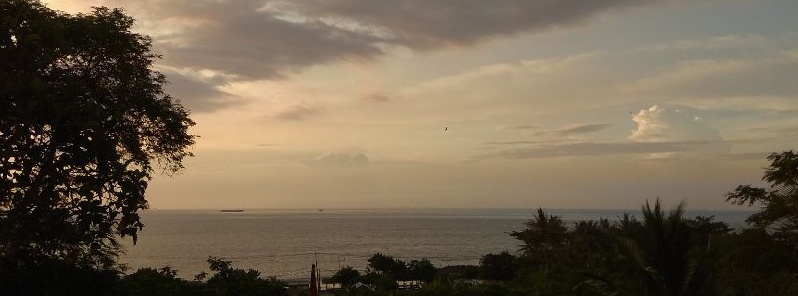
Phreatomagmatic activity at the Indonesian Anak Krakatau volcano has increased over the past couple of days. This is the site of a major eruption and resulting tsunami on December 22, 2018, during which at least 426 people lost their lives and 30 000 were injured,
Several eruptive episodes took place since 10:29 UTC on October 28, resulting in three Orange VONAs by 09:31 UTC today (VONA, Volcano Observatory Notification for Aviation).
The Darwin VAAC is reporting continuous volcanic ash up to 3 km (10 000 feet) above sea level on December 30.
The height of the plume is variable depending on eruption strength. 3 km (10 000 feet) is highest observed to far SW, based on Himawari-8 imagery acquired at 09:10 UTC today, Jakarta sounding at 00:00 UTC today and model guidance.
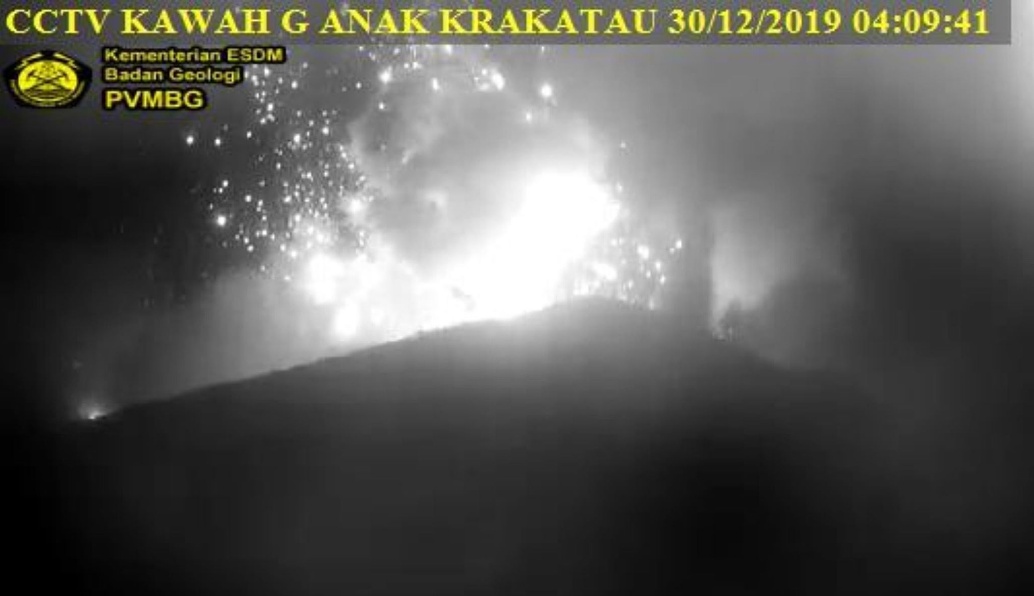
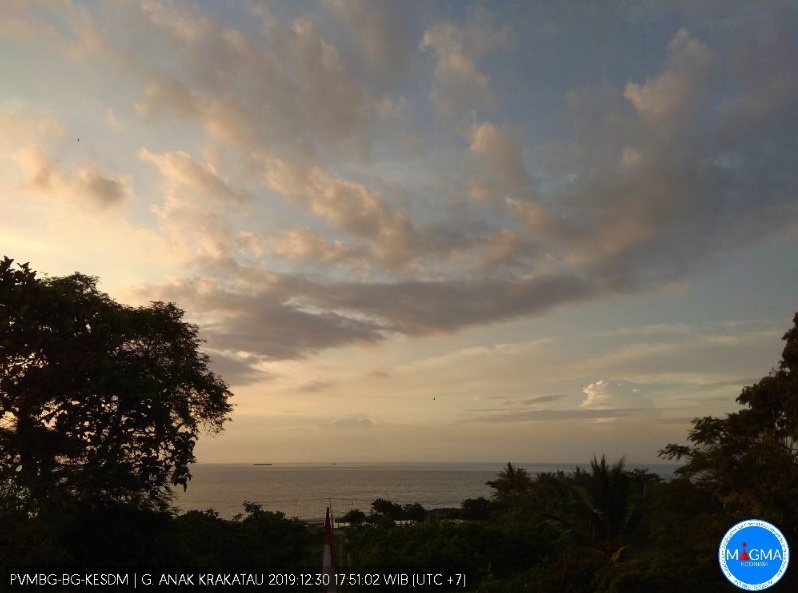
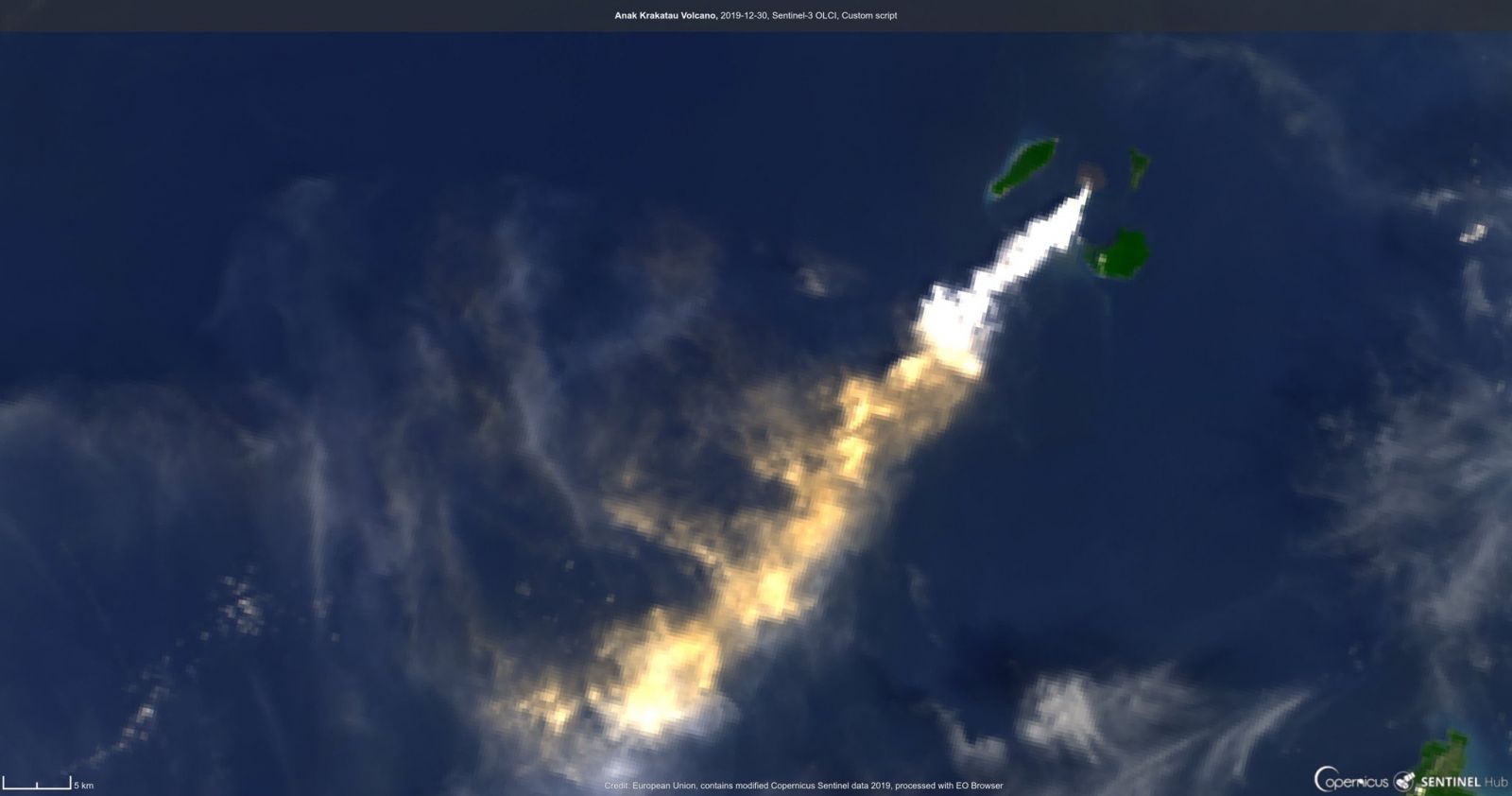
Anak Krakatau on December 30, 2019. Credit: Copernicus EU/Sentinel-3
The public and tourists are not allowed to approach the volcano within a radius of 2 km (1.2 miles) from the crater.
The Alert Level remains at 2 (on a scale of 1-4).
Much of the island of Anak Krakatau was destroyed in a series of events that included a deadly tsunami from a flank collapse, a Vulcanian explosion, and several days of Surtseyan phreatomagmatic activity1.
Due to the location of the volcano in the middle of the Sunda Strait, surrounded by coastal communities, damage from the tsunami was once again significant. Over 400 fatalities and 30 000 injuries were reported along with damage to thousands of homes, businesses, and boats.
After a small explosion on January 8, 2019, the volcano remained quiet until February 14 when a new seismic event was recorded. Intermittent explosions increased in frequency and continued through July 2019; images of Surtseyan explosions with ejecta and steam rising a few hundred meters were occasionally captured.
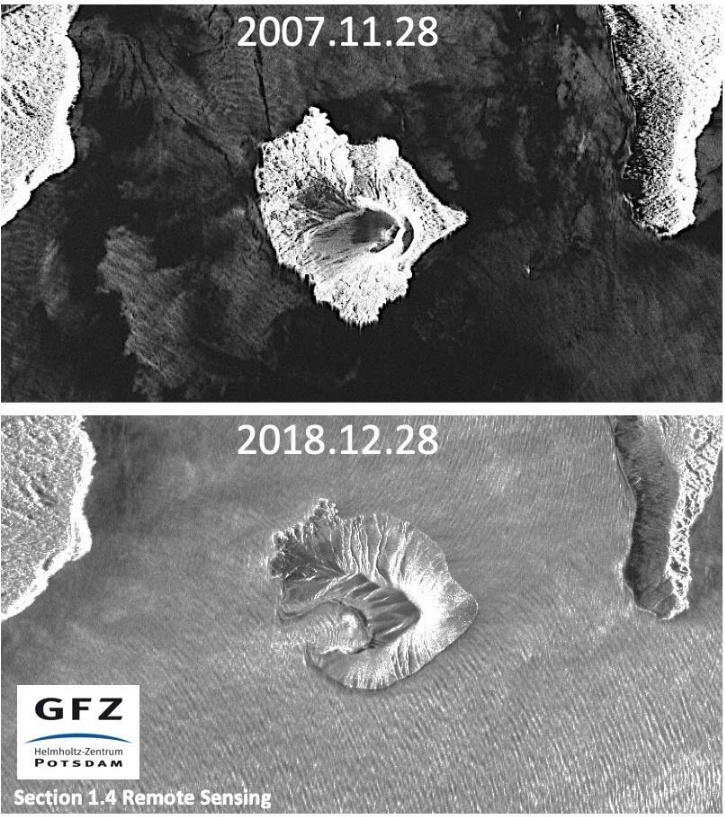
Related:
Related articles below cover events leading to December 22 eruption, including off-scale seismicity detected during July 2018, and post-eruption events and studies in chronological order.
Tsunami triggered by 2018 Anak Krakatoa eruption reached 100 m (328 feet), new study finds
New research shows that the fatal 2018 volcanic eruption of Anak Krakatoa in Indonesia sent a tsunami at least 328 feet (100 m) high, which could have resulted in widespread devastation had it traveled on another path. The researchers say this study is important for…
December 07, 2019
Early warning signals before deadly flank collapse at Anak Krakatau, Indonesia
Research has shown that the Anak Krakatau volcano in Indonesia displayed clear warning signals before it collapsed into the Sunda strait between the Sumatra and Java islands on December 22, 2018. The event triggered a tsunami which resulted in 430 fatalities. The…
October 05, 2019
Very close view of Surtseyan eruption at Anak Krakatau, Indonesia
A group of tourists visited Anak Krakatau on September 18, 2019, and managed to capture a surprising explosion from a very close distance. The activity at the volcano has not changed over the past weeks, with intermittent phreatic or phreatomagmatic explosions in…
September 21, 2019
Violent phreatomagmatic eruption at Anak Krakatau volcano, Indonesia
A violent phreatomagmatic eruption took place at Anak Krakatau volcano, Indonesia at 02:09 UTC (09:09 LT) on June 25, 2019. The volcano continues to be restless. Most of the time, its crater is only steaming, but occasionally, strong steam-driven explosions, such as…
June 26, 2019
PVMBG warns firsherfolk to stay away from Anak Krakatau, Indonesia
The Center for Volcanology and Geological Hazard Mitigation (PVMBG) has called on fisherfolk to stay alert and maintain a safe distance from Anak Krakatau volcano after an increase in eruptive activity was recorded in late February. The PVMBG recorded that there…
March 05, 2019
EarthUncutTV visits Anak Krakatau, documents changes to the island and surrounding region
James Reynolds of EarthUncutTV visited Anak Krakatau, Indonesia on January 10 and 11, 2019, documenting some of the dramatic changes to the island and the surrounding region after its recent eruptions and devastating tsunami on December 22. At least 431 people…
January 10, 2019
New cracks discovered at Anak Krakatau raise new landslide and tsunami fears, Indonesia
While volcanic activity continues at Indonesian Anak Krakatau, authorities said they've discovered new cracks running through the remaining island. The discovery raises fears that another potentially large-scale landslide and tsunami could be produced….
January 05, 2019
Anak Krakatau volcano alert level raised to 3 of 4, more tsunamis possible, Indonesia
Volcanic activity at Anak Krakatau continues increasing, forcing Indonesian authorities to raise the alert level from 2 to 3 (of 4) at 23:00 UTC on December 26, 2018 (06:00 WIB, December 27). More tsunamis are possible and BMKG recommends communities to stay 500 m -…
December 27, 2018
High-impact eruption at Anak Krakatau volcano, deadly tsunami produced, Indonesia
Powerful eruptions are taking place at Indonesian Krakatau volcano over the past 24 hours. The volcano is producing large lava flows and undersea landslides believed to be the cause of at least one deadly tsunami. According to the Darwin VAAC advisory issued 00:25…
December 23, 2018
Intense eruption continues at Anak Krakatau, alert level remains at 2 of 4, Indonesia
Mount Anak Krakatau erupted 56 times on Saturday, September 22, 2018, the Meteorology, Climatology, and Geophysics Agency (BMKG) reported September 23. The alert level remains at Level II (Waspada/Caution). Thick black smoke produced by the eruptions rose up o 200…
September 23, 2019
Eruptions intensify, off-scale seismicity at Anak Krakatau, Indonesia
Explosive activity at Anak Krakatau in Indonesia continues and its seismicity is reportedly going off the scale today, July 12, 2018. "Krakatau is going crazy … 100 times explosion a day. Very loud and could be heard until Carita, 42 km (26 miles) away,"…
July 12, 2018
Geological summary
The renowned volcano Krakatau (frequently misstated as Krakatoa) lies in the Sunda Strait between Java and Sumatra. The collapse of the ancestral Krakatau edifice, perhaps in 416 CE, formed a 7-km-wide (4.3 miles) caldera.
Remnants of this ancestral volcano are preserved in Verlaten and Lang Islands; subsequently Rakata, Danan and Perbuwatan volcanoes were formed, coalescing to create the pre-1883 Krakatau Island. Caldera collapse during the catastrophic 1883 eruption destroyed Danan and Perbuwatan volcanoes, and left only a remnant of Rakata volcano.
This eruption, the 2nd largest in Indonesia during historical time, caused more than 36 000 fatalities, most as a result of devastating tsunamis that swept the adjacent coastlines of Sumatra and Java. Pyroclastic surges traveled 40 km (25 miles) across the Sunda Strait and reached the Sumatra coast.
After a quiescence of less than a half century, the post-collapse cone of Anak Krakatau (Child of Krakatau) was constructed within the 1883 caldera at a point between the former cones of Danan and Perbuwatan. Anak Krakatau has been the site of frequent eruptions since 1927. (GVP)
Featured image credit: Magma Indonesia

Commenting rules and guidelines
We value the thoughts and opinions of our readers and welcome healthy discussions on our website. In order to maintain a respectful and positive community, we ask that all commenters follow these rules.